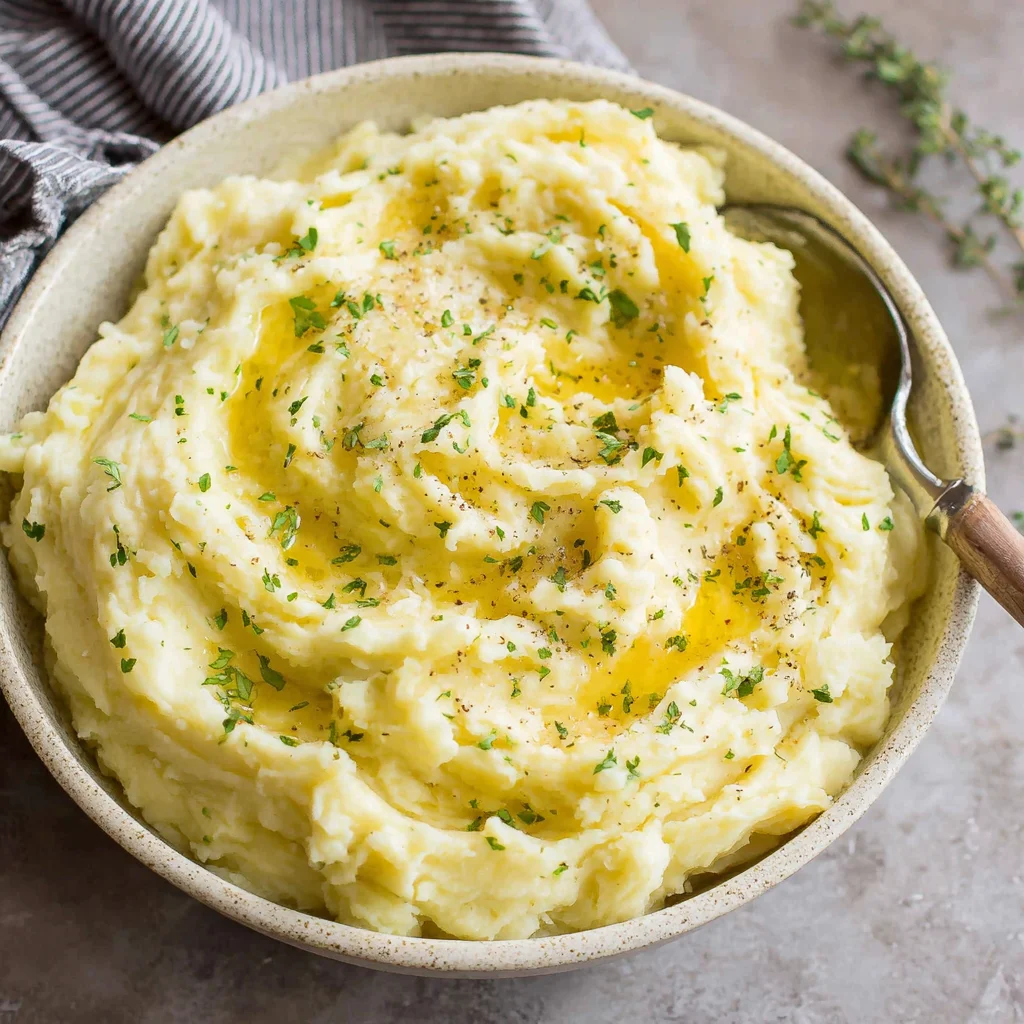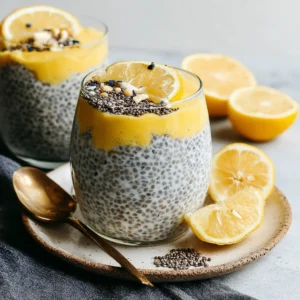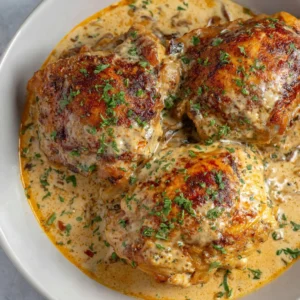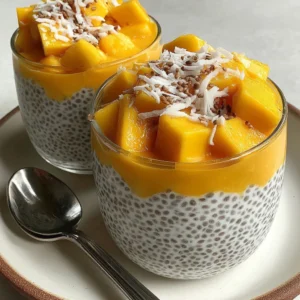There’s nothing quite like a bowl of perfectly creamy, fluffy mashed potatoes. They’re the ultimate comfort food, the perfect side dish for countless meals, and a blank canvas for culinary creativity. Whether you’re a seasoned chef or a kitchen novice, mastering the art of making the best mashed potatoes is a culinary achievement worth celebrating. This recipe isn’t just about boiling potatoes and adding butter; it’s about understanding the nuances that transform simple spuds into a truly unforgettable experience. We’ll delve into the secrets of achieving that perfect texture, the importance of selecting the right ingredients, and the delightful variations that can elevate your mashed potatoes from ordinary to extraordinary. Get ready to discover the recipe that will redefine your mashed potato experience forever – this is the recipe for the best mashed potatoes you’ll ever taste!
Why You’ll Love This Recipe
This recipe for the best mashed potatoes isn’t just another potato recipe; it’s a journey to creamy, fluffy perfection. It’s the culmination of years of experience, countless batches, and a relentless pursuit of the ideal mashed potato texture. What sets this recipe apart? It’s the attention to detail, from the careful selection of russet potatoes (the king of mashed potato varieties!), to the precise cooking method that ensures fluffy, not gummy, potatoes. The recipe emphasizes techniques that many overlook, such as letting the cooked potatoes steam after draining – this crucial step eliminates excess moisture, leading to that light and airy texture that makes all the difference. It’s a recipe that empowers you, providing clear, concise instructions, helpful tips, and options for customization, ensuring a consistently delicious result every single time. Imagine the satisfaction of serving perfectly fluffy, flavorful mashed potatoes to your family and friends, knowing you created this culinary masterpiece from scratch. The compliments alone will make this recipe worth trying!
Beyond the superior texture, this recipe is remarkably versatile. It’s the perfect foundation for experimenting with flavors. Feel free to add herbs like chives or rosemary, roasted garlic for a savory depth, or even a touch of cheese for extra richness. You can adapt it to your preferences and dietary needs. Need a vegan option? We’ve got you covered. Looking for a gluten-free side? This recipe is inherently gluten-free! The ease of preparation, combined with the consistently delicious outcome, is what makes this recipe a true kitchen staple. It’s quick enough for a weeknight meal yet impressive enough for a special occasion. This is a recipe you’ll return to again and again.
Why You Should Try This Recipe
In a world of pre-made instant mashed potatoes, there’s a genuine satisfaction in creating something from scratch that tastes infinitely better. This recipe offers a pathway to achieving that level of homemade goodness without the complicated techniques often associated with fine dining. The simplicity of the ingredients belies the exceptional results. It’s a recipe that showcases the natural flavors of the potatoes, enhanced by the richness of butter and milk, without overpowering them with unnecessary additives. It’s a testament to the power of simple cooking techniques done precisely. You’ll learn valuable cooking skills while enjoying a comforting and delicious side dish. Learning to make the perfect mashed potatoes is a fundamental cooking skill that will benefit you far beyond this single recipe. This recipe serves as a building block, offering a platform for your future culinary adventures.
Furthermore, making your own mashed potatoes allows you complete control over the ingredients. You can choose organic potatoes and high-quality butter and milk, ensuring a healthier and tastier outcome. You avoid the added preservatives and artificial flavors often found in commercially produced mashed potatoes. It’s a healthier option, allowing you to monitor sodium levels and fat content. Finally, the joy of creating something delicious from scratch, a comforting dish that everyone loves, is a rewarding experience. The aroma of freshly boiled potatoes, the satisfying process of mashing, and the taste of perfectly seasoned mashed potatoes are experiences worth savoring. Making these mashed potatoes is more than just cooking; it’s a culinary adventure that connects you to the simple pleasures of homemade goodness.
Ingredients and Necessary Utensils
To create the best mashed potatoes, you need the right ingredients and tools. The quality of your ingredients directly impacts the final product’s taste and texture. This section will detail the necessary items and give you some additional tips for success.
- Potatoes: 2 lbs russet potatoes. Russet potatoes are ideal due to their high starch content, which results in fluffier mashed potatoes. Avoid using waxy potatoes, like red potatoes, as these will result in a gummy texture. Look for potatoes that are firm to the touch, without any bruises or soft spots.
- Milk: ½ cup whole milk is recommended. Whole milk adds richness and creaminess. However, 2% milk works well too if you prefer a slightly lighter version. Avoid using skim milk, as it will lack the necessary fat content for truly creamy mashed potatoes.
- Butter: ¼ cup unsalted butter, cut into pieces. Unsalted butter allows for better control over the seasoning. Use high-quality butter for the best flavor. Consider using European-style butter, known for its rich flavor, for an elevated taste experience.
- Seasoning: ¼ teaspoon salt and ¼ teaspoon black pepper. Start with these basic seasonings and adjust to your liking. Consider adding other spices and herbs based on your preferences.
- Optional additions: 1-2 tablespoons sour cream or cream cheese for extra richness. These ingredients add a smooth, tangy flavor. You can also experiment with other additions, like roasted garlic, herbs, or cheese.
- Other potential additions: Consider adding a tablespoon of finely chopped fresh herbs, such as chives, parsley, or rosemary, for an additional layer of flavor. For a cheesy twist, try incorporating some grated cheddar, parmesan, or Gruyere cheese.
Necessary Utensils:
- Large pot for boiling the potatoes
- Colander for draining the potatoes
- Potato masher or electric mixer (handheld or stand)
- Measuring cups and spoons
- Cutting board and knife (for peeling and quartering the potatoes)
- Large bowl (optional, for mashing if using an electric mixer)
Detailed Recipe Steps
Now, let’s create those dreamy mashed potatoes! Follow these steps carefully, paying attention to the details, and you’ll be rewarded with the fluffiest, creamiest potatoes of your life.
- Boil the potatoes: Place the peeled and quartered russet potatoes in a large pot and cover with cold water. Ensure the water level is about an inch above the potatoes. Bring the water to a boil over high heat. Once boiling, reduce the heat to medium-low and simmer for 15-20 minutes, or until the potatoes are very tender and easily pierced with a fork. Overcooking is better than undercooking in this instance. Undercooked potatoes will be difficult to mash and will result in a less-than-smooth texture. Test for doneness by piercing a potato with a fork; it should go in easily.
- Drain the potatoes: Once cooked, immediately drain the potatoes thoroughly in a colander. Do not rinse the potatoes. Let the potatoes sit in the colander for a few minutes to allow excess moisture to steam off. This step is crucial for achieving fluffy mashed potatoes; the excess moisture will make them gummy.
- Mash the potatoes: Return the potatoes to the pot. Add the milk and butter. If using a potato masher, mash the potatoes until smooth and creamy. Work in sections, ensuring all the potatoes are well-mashed. If using an electric mixer (handheld or stand), start on low speed and gradually increase to medium. Be careful not to overmix, as this can result in gummy potatoes. If using a stand mixer, use the paddle attachment for best results. If using a hand mixer, do not overwork the potatoes, stopping when the texture is smooth but still slightly fluffy.
- Season and serve: Stir in the salt and pepper. Taste the potatoes and adjust the seasoning as needed. Add more salt, pepper, or even a touch of nutmeg if desired. If using sour cream or cream cheese, stir it in now. Serve the mashed potatoes immediately for the best texture and flavor. If keeping them warm, do so in a warm oven (around 200°F) to prevent them from drying out.
Tips and Variations
While the basic recipe is straightforward, there are several ways to elevate your mashed potato game. Experiment with different flavors and techniques to find your perfect mashed potato experience.
- Milk Alternatives: For a richer flavor, use heavy cream instead of milk, or a combination of milk and cream. You can also substitute milk with unsweetened almond milk or soy milk for vegan mashed potatoes. Keep in mind that plant-based milks may result in a slightly thinner consistency.
- Butter Alternatives: Olive oil, coconut oil, or even avocado oil can be used instead of butter for a healthier alternative, but they will affect the flavor profile of your mashed potatoes. Keep in mind that the flavor of the oil will be more prominent in your finished dish.
- Flavor Variations: Experiment with different herbs and spices! Roasted garlic, chives, rosemary, thyme, or even a pinch of nutmeg can elevate the flavor profile. For a cheesy twist, add grated cheddar, parmesan, or Gruyere cheese. A dash of garlic powder adds subtle savoriness.
- Preventing Gumminess: Thoroughly drying the potatoes after boiling is essential. Ensure the potatoes are very tender before draining and allow them to steam in the colander for a few minutes before mashing. Do not overmix, especially when using an electric mixer.
- Creamy Consistency: If your mashed potatoes seem too thick, add a little extra milk or cream until you reach your desired consistency. For a smoother texture, use a potato ricer instead of a masher.
- Vegan Mashed Potatoes: Substitute the milk with unsweetened plant-based milk (like almond or soy milk) and the butter with vegan butter or olive oil. The result might be slightly less creamy but still delicious.
- Gluten-Free Mashed Potatoes: The base recipe is naturally gluten-free, ensuring that everyone can enjoy this comforting dish.
Nutritional Values and Benefits
While mashed potatoes are often associated with high calorie content, they can be part of a balanced diet. The nutritional value depends on the ingredients you use and the portion size.
Approximate Nutritional Information (per serving, based on a recipe using whole milk and butter):
Note: These are approximate values and can vary depending on the specific ingredients used and the portion size. For precise nutritional information, use a nutrition calculator with your specific ingredients.
- Calories: Approximately 200-250
- Protein: Approximately 4-5 grams
- Fat: Approximately 10-12 grams
- Carbohydrates: Approximately 30-35 grams
Benefits of Ingredients:
- Potatoes: A good source of potassium, vitamin C, and fiber (especially when leaving the skins on). Potassium is vital for maintaining healthy blood pressure.
- Milk (whole milk): Rich in calcium, important for strong bones and teeth. It also provides vitamin D, essential for calcium absorption.
- Butter: Contains fat-soluble vitamins A and E, which are important for various bodily functions. Use in moderation.
FAQs
What kind of potatoes are best for mashed potatoes?
How do I prevent my mashed potatoes from being gummy?
Can I make mashed potatoes ahead of time?
What are some ways to add flavor to mashed potatoes?
Are mashed potatoes healthy?
Conclusion
Making the best mashed potatoes is a skill that will elevate your cooking game. This recipe, with its emphasis on careful technique and quality ingredients, is your guide to achieving that perfect fluffy and creamy texture. Remember the key steps: thoroughly draining the potatoes, allowing them to steam, and not overmixing. Experiment with different flavor variations to personalize your mashed potatoes and make them your own. Don’t forget to share your creations with us! Leave a comment below, tell us about your experience, and share your own favorite mashed potato variations. Happy cooking!
For more delicious recipe ideas, check out our other recipes on recipesebook.com and follow us on Pinterest for more inspiration! (Replace ‘yourpinterestprofilehere’ with your actual Pinterest profile URL)

The Best Mashed Potatoes: Creamy, Fluffy, and Delicious
Ingredients
Equipment
Method
- Place quartered potatoes in a large pot and cover with cold water. Add about an inch of water above the potatoes.
- Bring to a boil over high heat, then reduce heat to medium-low and simmer for 15-20 minutes, or until easily pierced with a fork.
- Drain potatoes thoroughly in a colander. Let them sit for a few minutes to steam off excess moisture.
- Return potatoes to the pot. Add milk, butter, and optional garlic powder.
- Mash potatoes until smooth and creamy using a potato masher or electric mixer (start on low speed).
- Stir in salt and pepper. Taste and adjust seasoning as needed. Stir in sour cream or cream cheese, if using.
- Serve immediately or keep warm.


